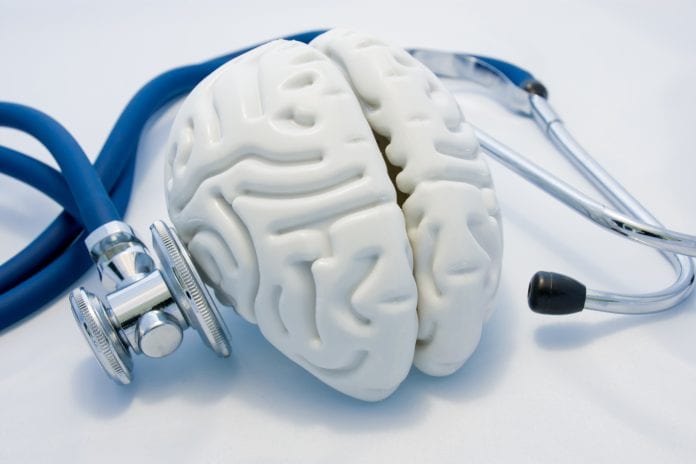
Scientists have used a newly developed laboratory model of three types of brain cells to reveal how a HIV infection can impact the brain.
The Human Immunodeficiency Virus (HIV) infection impacts the human body in a variety of ways, however medical advances have made progress in mitigating the impact of the infection using antiretroviral therapy (ART). One area of impact which is yet to see much progress is the impact of the infection on cognition.
Half of HIV patients have HIV-associated neurocognitive disorders (HAND), which can manifest in a variety of ways, from forgetfulness and confusion to behaviour changes and motor deficiencies.
To better understand the mechanisms underlying HAND, researchers from Penn’s School of Dental Medicine and Perelman School of Medicine and from the Children’s Hospital of Philadelphia (CHOP) brought together their complementary expertise to create a laboratory model system using three of the types of brain cells thought to be involved.
Led by doctoral student Sean Ryan, who was co-mentored by Kelly Jordan-Sciutto of Penn Dental Medicine and Stewart Anderson of CHOP and Penn Medicine, the model recapitulates important features of how HIV infection and ART affect the brain.
The research was published in the journal Stem Cell Reports.
A close look at the brain
Jordan-Sciutto, co-corresponding author on the paper, said: “Frankly the models we generally use in the HIV field have a lot of weaknesses. The power of this system is that it allows us to look at the interaction between different cell types of human origin in a way that is more relevant to patients than other models.”
Anderson, co-corresponding author on the paper, said: “We’re collaborating with a variety of colleagues to use this system to study Alzheimer’s disease as well as schizophrenia.
“We have the components in a dish that we know are interacting in these diseases, and this gives us a new mix-and-match way to understand how certain cells are contributing to neuronal damage.”
“We had been looking at the role of microglia, the resident immune cells of the central nervous system,” says Ryan. “We wanted to see if we could see the mechanistic changes that occur with microglia in schizophrenia.”
Ryan and Anderson were interested in using human-induced pluripotent stem cells, which are adult cells that are reprogrammed to resemble embryonic stem cells, and which can be coaxed into differentiating into a variety of different cell types.
The scientists identified the three cell types they were most interested in studying: neurons, astrocytes, and microglia.
Neurons aren’t directly infected by HIV but are known to be damaged during infection. Meanwhile astrocytes are believed to interact with neurons, causing damage by sending pro-inflammatory factors into the spaces between cells, called synapses. Microglia, which are responsible for maintaining a healthy environment in the absence of disease, are seen to expand and contribute to inflammation during HIV infection.
“A lot of people are taking PreEP [pre-exposure prophylaxis] if they’re in a situation where their risk of contracting HIV is heightened,” says Ryan. “Just as we want to understand the cognitive impacts of HIV, we also want to see whether these drugs alone are impacting the brain health of otherwise healthy people.”
Combination of infection and ART creates a unique response
The researchers looked at RNA expression in their cultures to see what proteins and signalling pathways were becoming activated in each scenario. During infection, they saw inflammatory pathways that had previously been implicated in HIV in earlier research. When they introduced the antiretroviral drug EFZ, which is not in common use in the United States but remains a frontline therapy in many other areas of the world, with an infection, the activity of most of these pathways was reduced.
Ryan said: “EFZ treatment of the tri-cultures that included HIV-infected microglia reduces inflammation by around 70%.
“It seems a combination of infection and ART is creating its own unique response that is different from the sum of its parts. Knowing what pathways are still active due to ART could help us appropriately target additional therapies so patients don’t develop HAND.”
Many features of infection seen in the three-cell culture mirror what is known from HIV infection and ART treatment in people, giving the researchers confidence in the reliability of their model.
“Just looking at the microglia,” says Anderson, “we see in our system that they are taking on both of their normal roles in keeping key signalling systems balanced during their normal state and activating and causing damage when they’re fighting infection. We’re able to model normality and abnormality in a way we haven’t been able to before.”
For Jordan-Sciutto, the new system “is really going to change the way my lab operates going into the future.”
She is hopeful many other HIV scientists will take it up to further their studies as she also explores more aspects of HIV’s impact on the brain, such as how it navigates through the blood-brain barrier that normally protects the central nervous system from inflammation and infection.
In addition to studying HIV, members of the team plan to use the same model to shed light on the neurological mechanisms that underlie other conditions, such as schizophrenia, Alzheimer’s, and even normal ageing.









